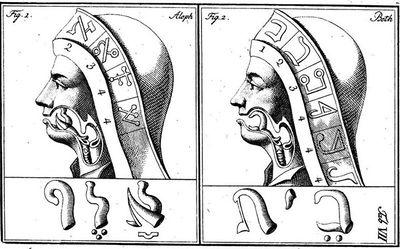Annotation:Speaking Figure (The)
X:1 T:Speaking Figure, The M:6/8 L:1/8 R:Country Dance B:Samuel, Ann & Peter Thompson -- Complete Collection of 200 Favourite Country Dances, vol. 5 (London, 1788, p. 10) Z:AK/Fiddler's Companion K:G D|G2B A2c|B2A G2g|dcB ABc|BAB G2D| G2B A2c|BAB G2g|fed Adc|d3 D2:| |:d|e2c c2e|d2B B2d|c2A A2c|B2G AFD| cBA B2G|c2A def|g2c BAG|DGF G2:|]
SPEAKING FIGURE, THE. AKA and see "Little Tomy." English, Jig and Country Dance (6/8 time). G Major. Standard tuning (fiddle). AABB. "Speaking Figure," a 6/8 melody with directions for a country dance, was first published by London music publishers Longman, Lukey & Broderip in R. Bride's Bride's Favourite Collection of 200 Select Country Dances, Cotillions (1776). Subsequently it was included in Samuel, Ann and Peter Thompson's Thompson's 24 Country Dances for the Year 1788 and in their Thompson's Compleat Collection of 200 Favourite Country Dances, vol. 5 (1788). In America, to was included in Joseph Carr's Pocket Companion (Baltimore, c. 1800).
"Speaking Figure" was entered into the mid-19th century music manuscript collection of Somerset shoemaker and fiddle player William Winter, who lived in the villages of Lydeard St Lawrence and West Bagborough between 1774 and 1861.

An American exhibition in 1790 advertised a "Speaking Figure...consisting of CHINESE and ITALIAN SHADES with the most elegant SCENES, Transparent SCENERY, and other Decorations adapted to different Pieces." Americans did not begin manufacturing automata as frequent or as skilled as many of the French and German automata makers, and as a result, most of the traveling exhibits featured foreign machines. For example, the French automata acrobats of Mr. L'Aiftocrate were exhibited in Philadelphia in 1795 and the "Chinese Automaton Figure" performed "feats on the rope" in Rhode Island in 1796. It is also of interest to note that the cost of attendance was usually between a quarter of a dollar and half a dollar, an enormous amount of money for the time.
The identical tune was entered into the large mid-19th music manuscript collection of Manchester, England, musician biography:John Roose as "Little Tomy."
the Learned the Speaking Figure automata in American Exhibits. Interestingly, the first "foreigners" exhibited in America often had no pulse.
- ↑ https://www.open.edu/openlearn/history-the-arts/history/history-science-technology-and-medicine/history-technology/short-history-the-early-days-artificial-intelligence
- ↑ https://www.open.edu/openlearn/history-the-arts/history/history-science-technology-and-medicine/history-technology/short-history-the-early-days-artificial-intelligence

